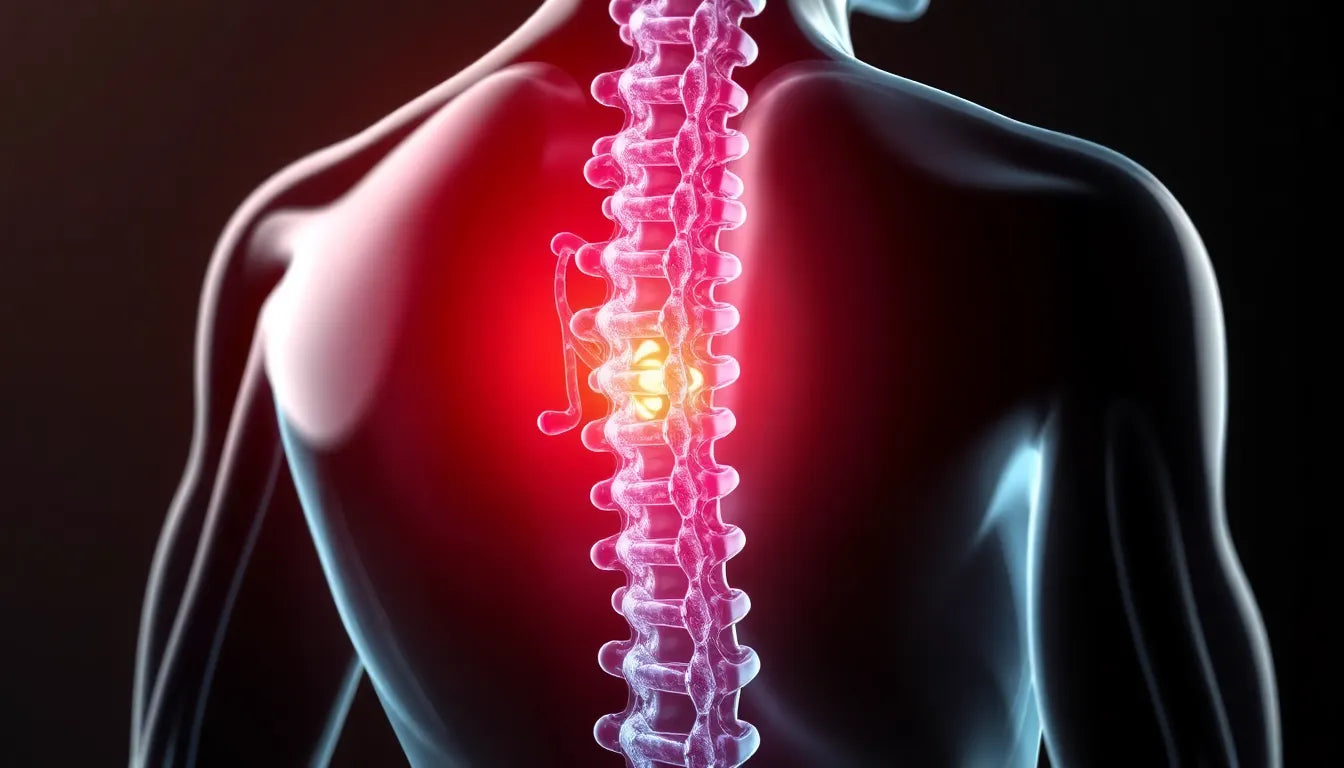Have you ever wondered why some people suffer from herniated discs while others don’t? Understanding the hidden causes of herniated discs can empower you to take control of your spinal health. This common yet often misunderstood condition can cause significant discomfort and disrupt daily life. By delving into the causes, we can better equip ourselves to prevent and manage this condition effectively.
what is a herniated disc?
A herniated disc occurs when the soft, gel-like center of a spinal disc pushes through a crack in the tougher exterior casing. This can happen in any part of the spine but is most common in the lower back. The condition may lead to pain, numbness, or weakness in the limbs, depending on where the herniation occurs and whether it presses on a nerve. Understanding the mechanics of a herniated disc is crucial for appreciating why they occur and how to prevent them.
why understanding the causes matters
Knowing the underlying causes of herniated discs is vital for prevention and management. Many factors contribute to the development of this condition, ranging from lifestyle choices to genetic predispositions. By identifying and understanding these causes, individuals can make informed decisions about their health, potentially reducing the risk of developing a herniated disc. Additionally, this knowledge allows for more effective management strategies for those already affected, helping to alleviate symptoms and improve quality of life.
In the following sections, we will explore the factual causes of herniated discs, including age-related degeneration, trauma, chronic strain, lifestyle factors, and genetic predispositions. By uncovering these secrets, we aim to empower you with the knowledge needed to protect your spinal health and avoid the discomfort associated with herniated discs.
factual causes of herniated discs
Understanding why you get a herniated disc requires a closer look at the various factors that contribute to this condition. While some causes are beyond our control, many are linked to lifestyle choices and environmental factors. Here, we delve into the key reasons behind herniated discs, offering insights that can help you take proactive steps toward prevention.
degeneration and aging
One of the primary causes of herniated discs is age-related degeneration. As we age, the spinal discs naturally lose hydration and elasticity, making them more susceptible to tears and ruptures. This process, often referred to as disc degeneration, is a common part of aging and affects most people to some degree. The Cleveland Clinic and other medical sources highlight that this degeneration reduces the disc's ability to absorb shock, increasing the likelihood of herniation.
trauma and injury
Trauma or injury to the spine is another significant cause of herniated discs. Sudden incidents, such as falls or car accidents, can exert excessive pressure on the spine, leading to a rupture of the disc's outer ring, known as the annulus fibrosus. This type of acute herniation occurs when the force is strong enough to push the disc material out of its normal boundaries, causing pain and potential nerve compression.
chronic strain and repetitive movements
Engaging in repetitive activities that involve bending, twisting, or heavy lifting can gradually weaken the spinal discs. Over time, these movements can lead to chronic strain, making the discs more prone to herniation. Occupations that require constant physical exertion, such as construction work or jobs involving manual labor, are particularly at risk. Insights from MedlinePlus and the University of Maryland emphasize the importance of recognizing these repetitive stressors to mitigate their impact on spinal health.
lifestyle and environmental factors
Several modifiable lifestyle factors play a role in the development of herniated discs. Being overweight places additional stress on the spine, increasing the risk of disc issues. An inactive lifestyle can also contribute to poor muscle support around the spine, leading to instability and potential disc herniation. Furthermore, occupations that require prolonged periods of sitting or standing without adequate movement can exacerbate these risks. Addressing these factors through regular exercise, weight management, and ergonomic adjustments can significantly reduce the likelihood of herniation.
genetic predisposition
Genetics also play a crucial role in the susceptibility to herniated discs. Studies have shown that individuals with a family history of disc degeneration are more likely to experience similar issues. In some cases, genetic factors may even outweigh environmental influences, making it important for those with a family history to be particularly vigilant about maintaining spinal health.
additional risk factors
Other factors, such as smoking, obesity, diabetes, and connective tissue disorders, can exacerbate disc health issues. Smoking, for instance, reduces blood flow to the spine, hindering the delivery of essential nutrients to the discs. This can accelerate the degenerative process and increase the risk of herniation. Additionally, demographic trends indicate that middle-aged and older men are more frequently affected by herniated discs, underscoring the importance of early preventive measures.
By understanding these causes, you can take proactive steps to protect your spine and reduce the risk of herniated discs. In the next section, we'll explore effective preventive measures and lifestyle changes that can help maintain spinal health and avoid the discomfort associated with this condition.
effective preventive measures for herniated discs
Preventing herniated discs involves a combination of lifestyle changes and ergonomic interventions that can significantly reduce the risk. By focusing on maintaining a healthy weight, staying active, and practicing good posture, individuals can protect their spinal health and prevent the discomfort associated with herniated discs.
Maintaining a healthy weight is crucial, as excess body weight places additional stress on the spine, increasing the risk of disc issues. Regular physical activity not only helps with weight management but also strengthens the muscles that support the spine, providing better stability and reducing the likelihood of herniation. Incorporating exercises that enhance core strength, flexibility, and overall fitness can be particularly beneficial.
Practicing good posture is another essential preventive measure. Poor posture, whether sitting, standing, or lifting, can strain the spine and contribute to disc problems. Ergonomic interventions, such as using supportive seating and arranging workspaces to promote neutral spine alignment, can help mitigate these risks. Simple adjustments like ensuring that computer screens are at eye level and using chairs with proper lumbar support can make a significant difference.
For those in occupations that involve repetitive bending, heavy lifting, or prolonged periods of static posture, workplace modifications can be especially important. Ergonomic aids, such as lifting devices, adjustable desks, and anti-fatigue mats, can help reduce strain on the spine and prevent herniated discs. Additionally, taking regular breaks to move and stretch can alleviate the pressure on spinal discs and promote overall spinal health.
By adopting these preventive strategies, individuals can take proactive steps to protect their spine and reduce the risk of herniated discs. Implementing lifestyle changes and ergonomic solutions not only helps prevent this condition but also enhances overall well-being and quality of life.
frequently asked questions
What is the main cause of a herniated disc?
Age-related degeneration is the most common cause of herniated discs, but factors such as trauma, repetitive strain, and genetics also play significant roles.
Can lifestyle changes really prevent a herniated disc?
Yes, adopting a healthy lifestyle, maintaining proper posture, and using ergonomic aids can significantly reduce the risk of developing a herniated disc.
Is a herniated disc hereditary?
Genetics can predispose individuals to disc degeneration and herniation, with family history being a strong predictor of susceptibility.
How can I tell if I have a herniated disc?
Common symptoms include pain, numbness, or weakness in the limbs. However, a medical diagnosis is necessary to confirm the presence of a herniated disc.
What are some ergonomic strategies to prevent herniated discs?
Implementing ergonomic workplace setups, using supportive seating, and incorporating regular movement and stretching routines can be effective strategies to prevent herniated discs.


















